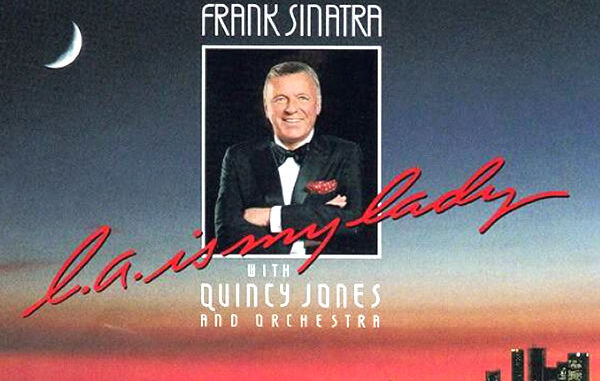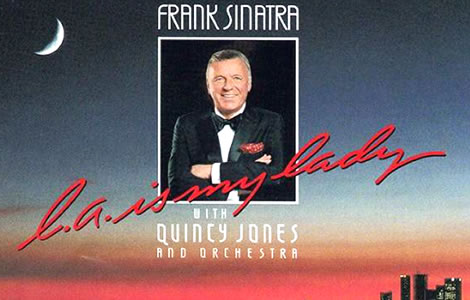
In 1984, Frank Sinatra released “L.A. Is My Lady,” a single that not only became a notable entry in his extensive discography but also lent its name to the album it headlined.

This album marked a significant moment in Sinatra’s career, as it was his last solo studio album and was heavily influenced by the legendary Quincy Jones.
The collaboration between Sinatra and Jones on this project brought together two titans of the music industry, creating an album that paid homage to Los Angeles and reflected the sophisticated, jazzy essence of Sinatra’s artistry.
Frank Sinatra and Quincy Jones: A Dynamic Collaboration
Quincy Jones’s influence on “L.A. Is My Lady” was profound and multifaceted. By the time of this collaboration, Jones was already an established maestro in the music industry, known for his versatility and innovative production techniques. His work spanned various genres, including jazz, pop, and R&B, making him a perfect fit to rejuvenate Sinatra’s sound for the 1980s.
Jones and Sinatra had a long-standing relationship that dated back to the early 1960s. Their mutual respect and understanding of each other’s artistry made for a seamless and productive collaboration. Jones’s role as the arranger and producer for the album was pivotal in crafting a sound that was both contemporary and timeless, capturing the essence of Sinatra’s style while integrating modern elements that would appeal to the audience of the time.
The Making of “L.A. Is My Lady”
The recording sessions for “L.A. Is My Lady” took place at the historic A&M Studios in Los Angeles. Jones assembled a team of top-notch musicians, including some of the finest session players in the industry. The album featured arrangements that were lush and sophisticated, with a big band sound that harkened back to Sinatra’s earlier years but with a fresh, modern twist.
Jones’s approach to the album was meticulous. He ensured that each track had a polished, refined sound, making full use of the orchestral arrangements that characterised Sinatra’s music. The production quality was top-notch, with each instrument and vocal line recorded with precision and clarity. This attention to detail was a hallmark of Jones’s production style and played a crucial role in the album’s success.
The Title Track: “L.A. Is My Lady”
“L.A. Is My Lady,” the title track of the album, is a standout piece that encapsulates the spirit of the entire project. The song is a love letter to Los Angeles, celebrating the city’s glamour and allure. Sinatra’s vocals are smooth and expressive, delivering the lyrics with a sense of warmth and affection for the city. The arrangement, crafted by Jones, features a vibrant big band sound, with brass and strings that complement Sinatra’s voice perfectly.
The lyrics of “L.A. Is My Lady” reflect Sinatra’s personal connection to Los Angeles, a city that had been an integral part of his life and career. The song’s upbeat tempo and cheerful melody convey a sense of joy and appreciation, making it a fitting tribute to the city of angels.
The Album: A Blend of Classic and Contemporary
The “L.A. Is My Lady” album as a whole showcases a blend of classic Sinatra and contemporary influences. Tracks like “The Best of Everything” and “Mack the Knife” feature dynamic arrangements that highlight Jones’s innovative production techniques. The use of modern recording technology and Jones’s expertise in arranging brought a new dimension to Sinatra’s music, ensuring that it remained relevant and appealing to audiences in the 1980s.
The album also includes a mix of standards and new compositions, offering a diverse listening experience. Songs like “Teach Me Tonight” and “Until the Real Thing Comes Along” are rendered with a sophistication and elegance that are quintessentially Sinatra, while tracks like “Stormy Weather” and “How Do You Keep the Music Playing?” showcase the seamless integration of contemporary elements into his classic style.
It’s a huge Capitol fm easy-listening favourite
“L.A. Is My Lady” stands as a testament to the enduring talent of Frank Sinatra and the visionary genius of Quincy Jones. The album received positive reviews from critics and was appreciated by fans for its high-quality production and timeless appeal. It marked the end of an era for Sinatra, being his final solo studio album, but it also highlighted his ability to adapt and evolve with the changing times.
The collaboration between Sinatra and Jones on this album is a shining example of what can be achieved when two musical legends come together. Jones’s influence helped to modernise Sinatra’s sound without compromising the integrity and style that had made him a beloved icon. The album remains a significant part of both artists’ legacies, reflecting their shared commitment to excellence in music.
Certainly, “L.A. Is My Lady” is more than just an album; it is a celebration of Sinatra’s connection to Los Angeles and a showcase of Quincy Jones’s unparalleled talent as a producer and arranger.
Together, they created a work of art that continues to resonate with listeners, embodying the timeless charm and sophistication of Frank Sinatra.
